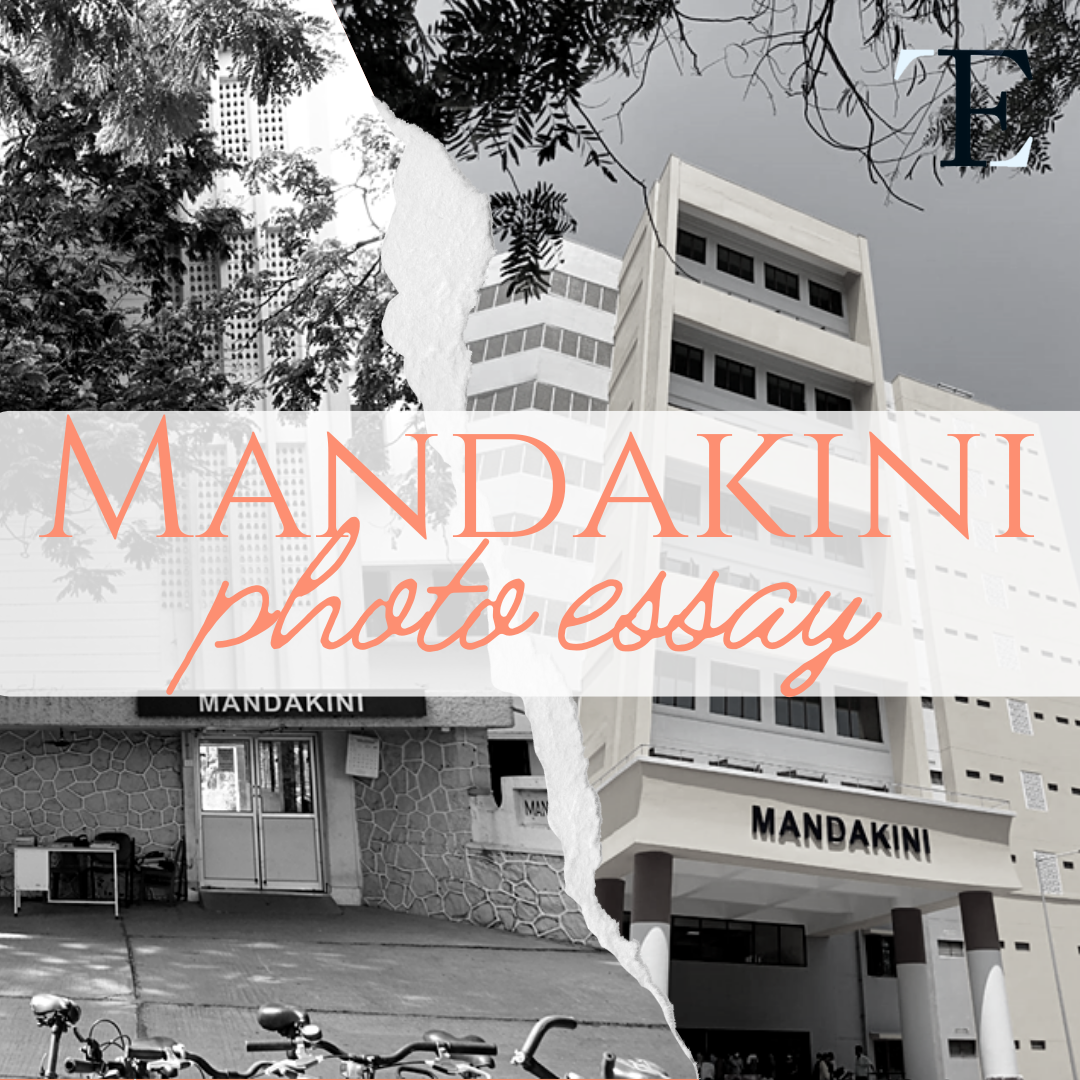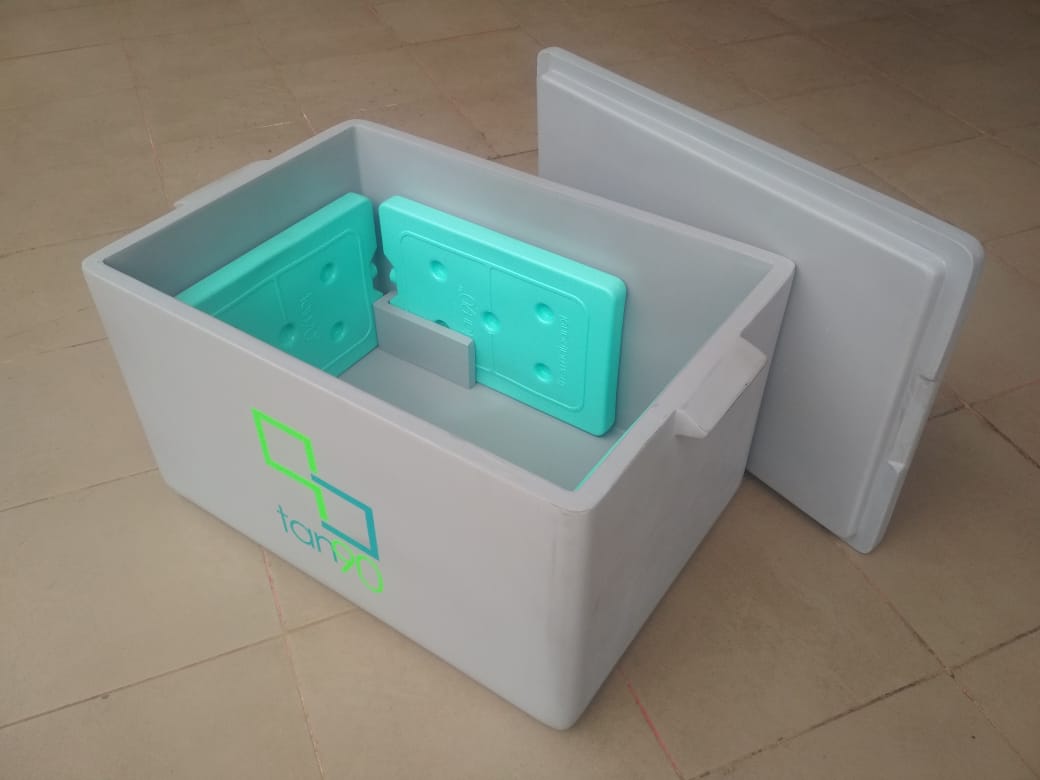They have seen insti as students and now as professors. In March, T5E requested female alumni professors to share their insights on challenges along the way. Niharika Gunturu, Ramcharanreddy Gudi and Sankalpa V chat with IITM professors Dr. Nandita Das Gupta, Dr. Krithika Narayanaswamy, Dr. C Sujatha, Dr. Sujatha Srinivasan, Dr. Prabha Mandayam and Dr. Sunethra Ramanan about everything from ‘insti-in-my-days’ to what is to be women in science and engineering.
‘There is no demand for women engineers, as such, as there are for women doctors; but there’s always a demand for anyone who can do a good piece of work’ – Edith Clarke.
Edith Clarke was the United States’ first female electrical engineer (MIT -1919), the first female professor of electrical engineering (UT Austin – 1947), and the first female fellow of the AIEE (1948, it later was renamed as the IEEE). That was just 70 years ago and in the United States.
How far have women engineers in our institute come since?
When it comes to being a haven for female engineers, the institute in itself has come a long way from the time of its establishment.
Dr. Nandita Das Gupta (EE – MTech ‘84, PhD ‘88) tells us about her chance arrival at IITM.
“It never occurred to us that there was IIT Kharagpur in West Bengal, and thus closer to home. IIT Madras had a reputation of having a very good, calm student atmosphere, and the EE department at IIT Madras was already quite well known. Also, all the IITs had separate entrance tests then, and IIT Madras used to conduct their exam first, and I cleared it – so there were no second thoughts! As for the distance, of course my parents were apprehensive, but I stood my ground and was quite clear on wanting to pursue higher studies-and then there was no looking back!”
Back then, Sarayu was the only girls hostel on the entire campus. Sarayu at that time had a maximum occupancy of around 100 students – it was composed of only the innermost quadrangle. Around the mid 80s, Sarayu was nearly bursting at its seams, prompting the building of the Sarayu extension. As for socializing – there were no signs of any ‘SFCs’ near Sarayu at all! For any food cravings – they had a ‘SAC’ (a student amenities center) in the hostel which was stocked with necessities, food and otherwise, and a hostel secretary used to take care of the sales of the stocked items.
How were things on the other side of the road? We spoke to three generations of female mechanical engineers – Dr. C Sujatha, Dr. Sujatha Srinivasan and Dr. Krithika Narayanaswamy.
Dr. C Sujatha first joined IITM as a Project Associate in the Electrical Engineering Department in 1981, quitting her job at ISRO Trivandrum to be with her husband. Later she joined the Applied Mechanics department as Senior Scientific Officer. She was asked to prepare and teach a new course in the Applied Mechanics specialization of the EE department – a task that not only led to her realising her love for teaching, but also prompting her to pursue her PhD in ME. After the initial trepidation of the change of area subsided, she pursued her interests in teaching by continuing as a professor till date – making her one of insti’s first few female professors (since ‘84)!
“I remember teaching a course when I was pregnant with my child, and I delivered just a couple of days after the last class of the course!”
Dr. Sujatha Srinivasan (B.Tech ME ‘92) tells us about her journey, and how it was possibly harder for her than the average ‘early’ female engineer due to the stereotypes surrounding mechanical engineering for women. She recalls how the ‘uncles of society’ used to question her mother as to why she dropped a year to pursue mechanical engineering of all things! After the unfortunate demise of her father, her family was faced with two choices – either she had to drop out of higher education and work, or her mother would have to work. For her mother however, the choice was obvious – her daughter would continue her studies to become a mechanical engineer. Dr. Srinivasan then continued to do her masters in mechanical engineering and after a long stint in the prosthetics industry, completed her PhD and returned to IITM as a professor. She casually quipped, “Looks like one had to be a Sujatha to become a female professor in this department!”.
The struggle then was not so much physical – on the shop floor working alongside men, but mental – in breaking the stereotypes to not only perform well, but even outperform their male peers through sheer will and mental strength.
She credits her super-senior, Radha for playing a major role in guiding her in the fresher year and nurturing her interest in mechanical engineering. She recalls how these ‘thagda women’ of mech used to serve as a great inspiration for her – not only in academics, but in so many different aspects of life. As for being a student in IITM, she was often one of the few or the only girl present in the class. She felt that it led to her having a rather isolating experience – she’d often not be informed when classes were cancelled, and collaborative studies were out of the question! She used to attend every class to get notes despite only needing a minimum attendance of 55%.
Dr. Krithika Narayanaswamy (B.Tech ME ‘08) later told us about how societal and familial pressures are still very much a reality when it comes to women pursuing higher education and a driving force makes the difference sometimes. In her case, it was her brother who encouraged her to pursue higher studies abroad and her family’s backing throughout. Even during her post-graduate time, her husband has been a source of support when she was faced with the dilemma of choosing between being an academician and shifting back to India and working for more years as a postdoctoral fellow.
She also added that being a girl in mechanical engineering, she had to face several offensive stereotypical jokes and comments that were running around which may have also been a major reason behind the stigma associated.
By the early to mid 90s, the landscape for women in the institute had changed significantly. While there were still no sights of an SFC near Sarayu, the sighting of women at Quark was no longer an unusual occurrence. Some credit that to the terrible parathas on Monday and the equally bad paneer muttar on Tuesday. By the late 90s – Sarayu along with its extensions again began to burst at its seams – and it became obvious that there was a need for another girl’s hostel. A fun fact we learned was that Sarayu’s ‘SAC’ was still up and running – but at this point of time students could take items from the hostel’s stock by just entering their name in a register provided for the same. It was all lent on credit, and accounts were settled at the end of the semester. We wonder how the recent hostel secretaries would feel about handling the logistics of such a practice today!
The girls’ branch of Gurunath used to close exactly at midnight and students used to race down with a five rupee coin to be the one to get the coveted last coffee.
By the early 2000s, the construction of Sharavati was underway – and it welcomed its first residents in 2003. Soon, a girl’s hostel zone started taking shape – with there being a small branch of Gurunath outside Sarayu. The girls’ branch of Gurunath was an extremely popular hangout spot that used to close exactly at midnight – and students used to race down with a five rupee coin to be the one to get the coveted last coffee.
All throughout our discussions, one stark factor remained constant – the number of females in every batch of engineering was dismal. Even the recent statistics can be slightly alarming – the ratio of female to male students in the undergraduate pool has been 1:10 on an average in the last few years although the ratio stands at 1:5 if postgraduate and PhD students are considered. The low percentages have many causes, but more importantly have warranted scrutiny from many quarters – so much so that starting from 2018 the IITs are set to create supernumerary seats to earmark at least 14% of their seats for girls.
Do women in science face the same pressures as women in engineering? We spoke to two physicists – Dr. Sunethra Ramanan (MSc – PH ‘97) and Dr. Prabha Mandayam (MSc – PH ‘05), both of whom agreed that the situation in pure sciences was far better than in engineering.
Dr. Prabha Mandayam tells us about her experience going from her MSc days here to a PhD at Caltech-
“Universities in the west typically do a good job of ensuring an equitable gender ratio when it comes to their UG programs. However, it is a well documented fact that as the streams get more and more specialized, there are more girls dropping out of STEM fields. In India, the situation is somewhat different, as borne out by my experience. I went to an all girls college for my BSc and even for my MSc here, there were a good number of girls in my class. I never had the feeling of not having female peers, I never felt singled because I am a girl and so on and so forth. But the first big group meeting I entered at Caltech, there were 15-20 guys in the room, I was the only girl and that was the first time that I actually became conscious of the poor gender ratio in higher academia.”
She adds that whenever her foreign collaborators visit to attend and hold workshops, attend conferences or hold colloquia, they are often pleasantly surprised to see higher number of women in the graduate science sphere in India than they do back in their home country. “It’s even accentuated by the fact that in India, there’s no pressure on women to dress “formally”, in academia atleast!
The reason for this, in part, might be because Chennai has a strange phenomenon of ‘only female colleges’. These colleges, often having a large number of pure sciences students, serve as havens for developing budding female scientists.
A similar observation was made by a French mathematician who noticed that having separate exams (or entry streams) for men and women actually served to increase the number of women pursuing mathematics in Parisian colleges. These numbers at a undergraduate level often translate to better representation at the graduate level as well.
What do they feel about the new supernumerary seat allocation for girls, as it now raises a question on whether girls are ‘able’ enough to make it to IIT on merit?
Dr. Mandayam says, “Look at what you’re asking a typical class 11 and class 12 student to do. You’re supposed to undergo an intensive amount of coaching – without which today its impossible to crack the JEE. Now, look at the investment for an average lower middle class family, if they had a girl and a boy. The amount of effort that parents put in – dropping the child off early morning to coaching class, pick them up and then send them to school, constantly make sure that all kinds of non-academic needs of the child are taken care of, the mother and father have to constantly be on the job- there are all kinds of resources and logistics that go into it.
“I’m asking you to view this situation for say a girl – in a lower middle class family of maybe several children, some of which may be guys – there’s definitely a socio-cultural aspect. So girls may not be able to compete at that level, because of these kind of disadvantages. That’s why I personally don’t think it is demeaning to have a quota of this form because I think – in our kind of system – this might be the only kind of affirmative action that is possible.”
Dr. Mandayam sums up, “The average middle class family does a trade-off, especially if they have multiple children – for them it’s absolutely essential that the guy succeeds. It’s an unfortunate truth. It’s not for want of ability. Because this is not like the SAT exam. This is a competitive exam which requires a very particular kind of training. So your ‘ability’ does count- but your ‘ability’ is the base minimum. On top of which this coaching has to work. In India, it’s such a sad situation, but once the child has gone through JEE – the parents are burned out.”
The response to this question from the other professors wasn’t much different either.
Dr Krithika remarked that the solution doesn’t lie in creating a supernumerary, but in addressing the root cause of the issue. Rather than introducing quota, efforts to inculcate the value of education and the spirit of healthy competition at a young age should be made.
But why is it, that even after entering the institute on an equal footing with their male counterparts, that girls shy away from ‘tech’? The proportion of girls to boys participating in CFI or Shaastra is starkly lower than the number in say – Saarang.
Dr. Mandayam opines, “Aptitude for various extracurriculars needs to be cultivated. For example, here in Chennai, it’s much more common to find parents sending their girls around to music and dance class. Whereas you won’t find the guys being put through the same set of hoops, it will be a different set of hoops. It works the other way as well, say in the carnatic music scene, guys are often rare sightings.”
“It’s much more common to find parents sending their girls around to music and dance class. Whereas you won’t find the guys being put through the same set of hoops, it will be a different set of hoops.”
Dr. Ramanan adds, “There are definitely subtle undertones in society. I never understood why for my daughter’s birthday, she was always gifted dolls. What’s wrong with Hot Wheels? I played with Hot Wheels when I was younger! And this ‘pink is for girls’ and ‘blue is for boys’ – to defy it, my husband wears pink t-shirts. I think there is some amount of biology, some amount of aptitude,but there is also a large portion of the kind of environment – which you cannot de-couple from.”
These undertones exist in all the ages and levels of human interactions. Most people expect that if you are living in an IIT, the husband must be a professor. Dr. Sujatha Srinivasan spoke of an incident when a visitor to the institute deliberately asked her husband in shorts for directions to some lab ignoring her standing beside him, with a backpack and obviously heading to work.
Dr. Ramanan then adds that larger ratios of women can sometimes be detrimental to overall exposure- “The batch senior to mine had only 2 girls. On the flipside however- these girls got along very well with all their male classmates, and they used to all study together in HSB and collaborate. In my batch, the girls were so large number that we stuck to ourselves and became very ‘self sufficient’ and started to cluster. I only felt the need to reach out and interact with my male peers when I took electives. It’s very important to break through that kind of clustering and start to interact, because there’s always something to learn! Numbers don’t stop you from that – you should be willing to move out of your comfort zone.”
“It’s very important to break through that kind of clustering and start to interact, because there’s always something to learn.”
As for their experiences in the institute, they both recall two very different scenes around the girls’ hostel zone. Dr. Ramanan was surprised at Dr. Mandayam’s mention of all the facilities that popped up in the mid 2000s and joked, ” My IITM seems to have been in black and white, and her’s in technicolor.”
The ‘Two Body’ Problem
As for challenges faced in academia, all the professors we spoke to acknowledged that the ‘two body problem’ is very real. The first steps after a PhD are often crucial in shaping your academic career, and more often than not – these professional choices are tied to factors like the spouse’s place of work and one of them has to make the sacrifice. For some reason however, comments like “Your husband works in Chennai – so obviously you must also look for a PostDoc there” seem all too common and unfairly so.
The first steps after a PhD are often crucial in shaping your academic career, and more often than not – these professional choices are tied to factors like the spouse’s place of work and one of them has to make the sacrifice.
The whole problem is only exacerbated when a third body is introduced into the picture. Dr. Srinivasan began her PhD just 5 months after giving birth to her second child-“In the beginning it was difficult for me to cope up with the courses. I also had this baby to take care of and would make multiple trips during the day to take care of and feed my baby. Due to all of that I felt like I never had healthy interactions with my peers and that I missed out on a lot in my post grad life. It was definitely worth it because my academic career gives me better work-life balance, but it was hard then and it wouldn’t have been possible without my husband’s support”.
“In addition to raising children”, adds Dr. C Sujatha. “as a woman, the society expects you to take full care of the family and sometimes it all gets a little too much to handle. But in the process, you begin to adapt, you begin to set things back into position.”
As for closing remarks, here is some advice for the budding female engineers and scientists in the institute –
‘Don’t stop yourself from doing anything just because you think you are only a girl.’
-Dr.C Sujatha
‘It is very important to not lose steam at the undergraduate level itself! Getting into IIT is not the be all, end all- it is only the beginning of one’s great journey. You IITians are a privileged lot, you’re one of the few who’ve made it in, so it’s imperative that you perform to your potential, which no one lacks around here!’
-Dr. Krithika Narayanaswamy
‘You should do whatever it is that you want to do. I’ve always thought that girls have to swim against the tide to reach IIT, defeating stereotypes on so many levels. You all have something extra, if you’ve made it this far.’
-Dr. Nandita Das Gupta
‘Don’t get trapped in stereotypes either consciously or unconsciously. You shouldn’t not conform for the sake of not conforming. Just pursue your interests – it’s never too late. You’re in IIT, you’ve ‘made it’ some distance. Use this time to move out of your comfort zone and find out what really drives you. All the other constraints that will pop up –
-Dr. Prabha Mandayam
– are just a blip in the universe.’
-Dr. Sunethra Ramanan.




